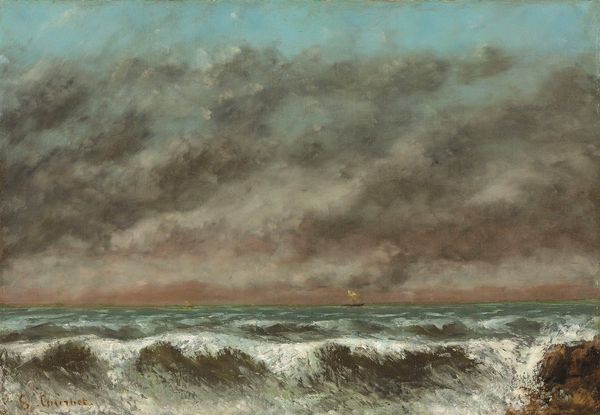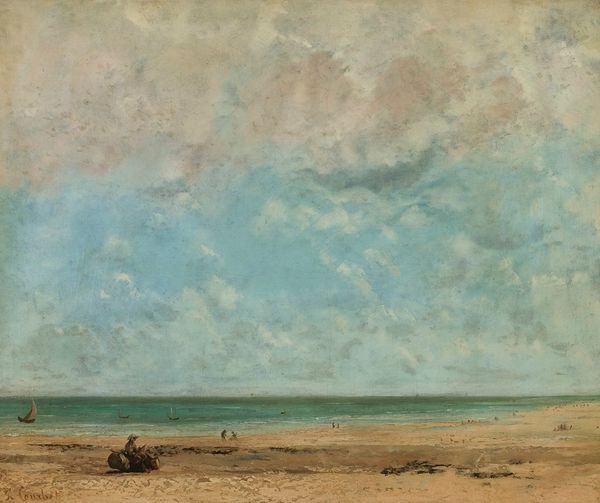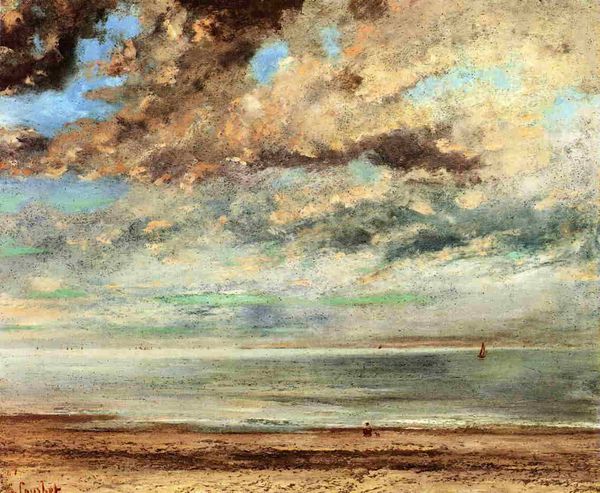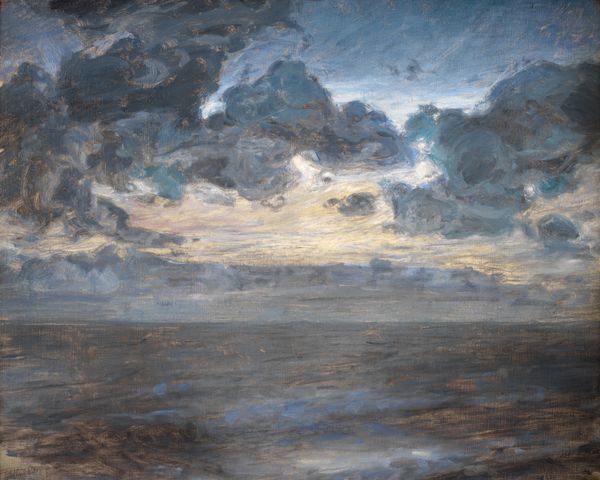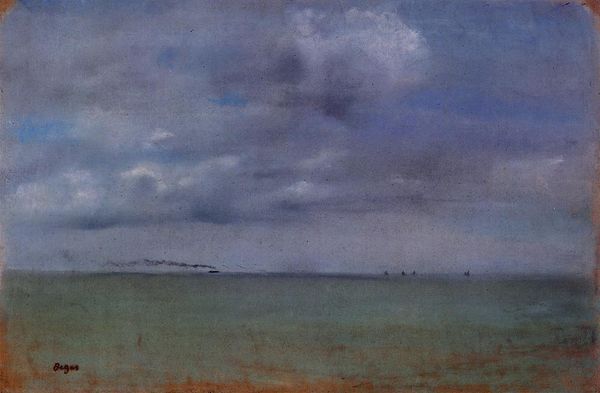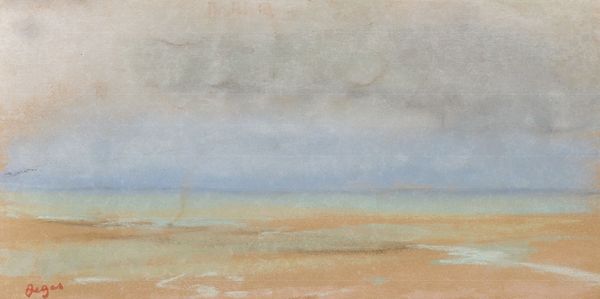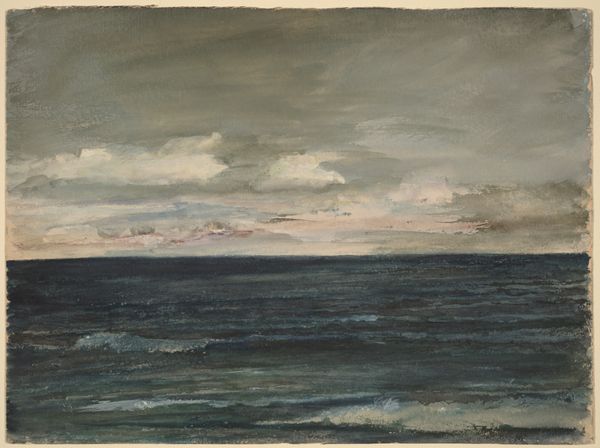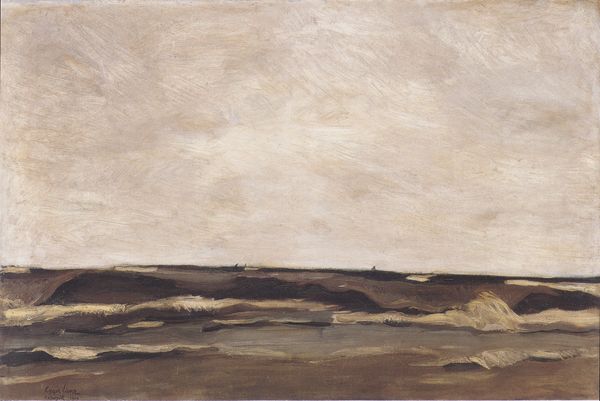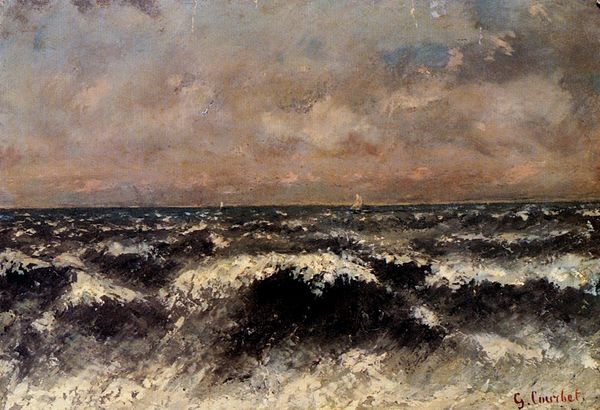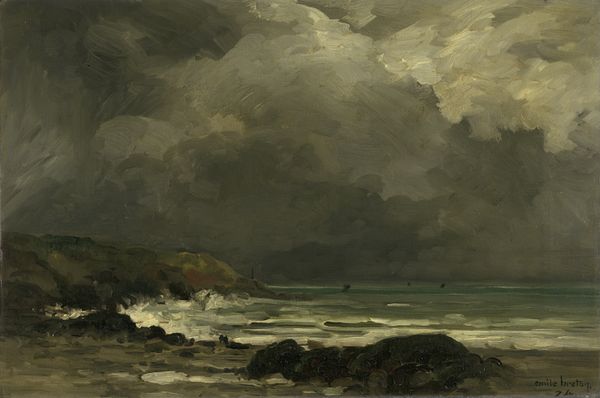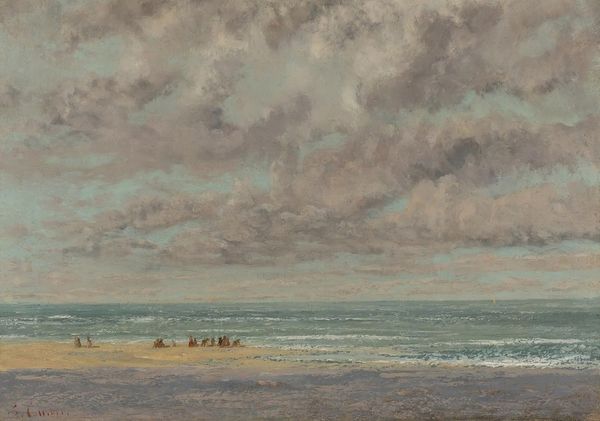
painting, oil-paint
#
sky
#
abstract painting
#
rough brush stroke
#
painting
#
oil-paint
#
landscape
#
impressionist landscape
#
ocean
#
cloud
#
paint stroke
#
water
#
realism
#
sea
Dimensions: 54 x 72.5 cm
Copyright: Public domain
Editor: So, this is Gustave Courbet's "Calm Seas," painted in 1873. It's an oil painting, and the atmosphere is intense, almost foreboding. There's so much weight in those clouds. What do you see in this piece, considering Courbet's position in the art world at that time? Curator: Given the historical context, I find it fascinating to consider how Courbet navigates the politics of landscape painting here. He painted this during a tumultuous period following the Franco-Prussian War and his imprisonment for his role in the Paris Commune. Does this painting reflect a personal sense of turmoil? The ‘calm’ feels almost ironic, wouldn't you agree, given what Courbet experienced? Editor: I do see that. The calm does seem…deliberate, maybe even defiant. Knowing that, do you think the public at the time would have interpreted this painting through that lens? Curator: Absolutely. The imagery of the sea held significant symbolic weight then, representing both freedom and the vastness of nature – a space outside of societal control. Remember that realism, which Courbet championed, was viewed by some as inherently political because it depicted the world as it was, not as the establishment wished it to be seen. A sea scene becomes a subtle but powerful statement about individual liberty, challenging traditional artistic and social norms. Editor: That's a really insightful way to think about it. So, the ‘calm’ is maybe not about tranquility at all, but resistance? Curator: Precisely. Or perhaps the quiet resolve *after* the storm. Editor: That completely changes my understanding of the painting. I was just seeing dark clouds, but now I see the politics embedded in them. Curator: That's the beauty of art history, isn't it? It encourages us to consider how the context shapes meaning, always revealing new perspectives. Editor: Definitely something I'll take with me in my study of art going forward. Thanks!
Comments
No comments
Be the first to comment and join the conversation on the ultimate creative platform.

